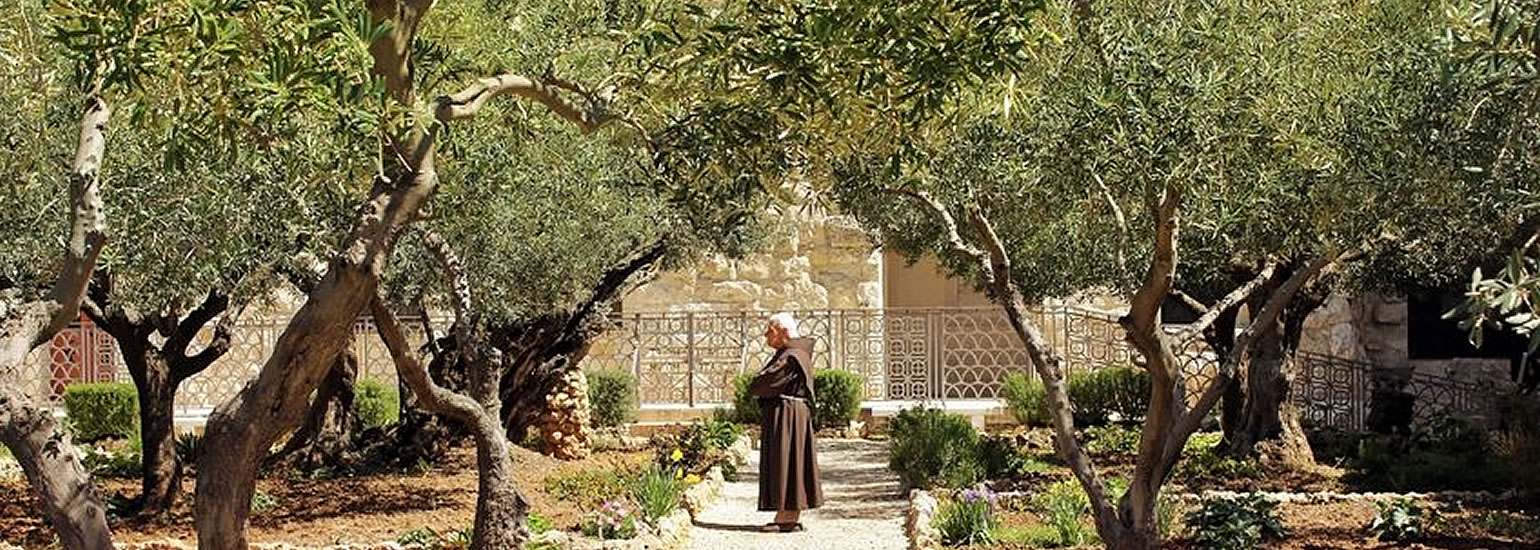
THE OLIVE
ON THE GARDA.
ON THE GARDA.

.
Related Topics : Olive harvest and new oil on Lake Garda - Monastery of San Colombano - Olive tree on Lake Garda - Fragments of the history of Garda lake extra virgin olive oil
A group of parchments preserved in the State Archives of Turin speaks of a land complex that the monastery of San Colombano di Bobbio had on Lake Garda. There are about eighty papers covering the period between the middle of the 12th and the beginning of the 13th century. In the twelfth century the landed estate belonging to the church of San Colombano di Bardolino is the only large patrimonial nucleus in possession of the Abbey of Bobbio which is situated far from the area of the Ligurian-Piacentino Apennines.
The eccentric geographical location did not prevent it from playing a very important role in the economic structure of the monastery even then, which, for those distant lands, showed a particular interest, in some respects greater than for other goods. How the land complex on Lake Garda was formed is not sufficiently documented. The expression "curtis de Garda", which from the age of Ludwig II to the Ottoman era is repeated unchanged in numerous imperial and royal diplomas to indicate the lands of the monastery on the lake, says very little about a patrimonial presence that has changed over time in its consistency and structure.
In the 12th century the lake land complex was concentrated for the most part in a not very extensive area of the eastern shore of Lake Garda, between Lazise, to the south, and Cavaion Veronese, to the north, with appurtenances scattered over a vast area, ranging from Valpolicella to the Brescia side of the lake. The high density of land around the church of San Colombano and the numerous possessions in the territories of Garda lake and Bardolino, territories in which Veronese ecclesiastical and monastic bodies also hold property, indicate a long-established land presence. In the twelfth century it experienced an increase through sporadic purchases and some commutationes that allowed the monks to get rid of small distant plots of land and therefore difficult to manage. An analysis of the forms of agrarian organization of the entire estate on Lake Garda allows us to reach wider conclusions. Almost all the property that in the 12th century depended on the church of San Colombano di Bardolino is divided into small plots given in concession to rustic people who are obliged to pay rents in kind or in money, on the basis of customary relationships or, more rarely, fixed in written contracts.
The way in which the land complex was managed emerges from an analysis of both the notarial deeds and the only inventory of land received, which can be dated between the end of the 1970s and the first half of the 1980s. The inventory also records a set of lands located in the vicinity of the religious building with cultivation of olive trees, vines and cereals, as well as meadows and woods, and managed directly, through paid work, since no corvées due from the concessionaires are documented. On almost 60% of the land are cultivated plants whose products can be easily sold.
A fundamental role is played by the cultivation of vines and olive trees which, with a slight predominance of the latter, are present in almost half of the plots. It should be noted that these specialized crops, although considerable, do not reach those high values that can be found, for the same period, in the patrimonial nucleus that the Veronese monastery of San Zeno has in Bardolino. In the latter, moreover, the processing of the olive tree has a strong prevalence, being widespread in about two thirds of the properties. The Bobbiese land complex, on the other hand, shows a greater diversification of crops. It can be considered that in this way the monks of San Colombano intend, on the one hand, to avoid the risks associated with monoculture and, on the other hand, to meet the variety of demand on the local market. The territory of Bardolino is where the lands of the monks of San Colombano basically have two crops. On the slopes of the hill that, from the small centre of Bardolino, rises up towards the church of San Colombano and Monte San Giorgio, there is a large number of plots of land cultivated almost exclusively with vines or olive trees, the former in concessionaries, the latter partly under the direct management of the monastery. Since this is the oldest nucleus of the Bobbic possessions on the lake, it can be assumed that the growing and predominance of viticulture and olive growing dates back to a not too recent past.
Related Topics : Olive harvest and new oil on Lake Garda - Monastery of San Colombano - Olive tree on Lake Garda - Fragments of the history of Garda lake extra virgin olive oil